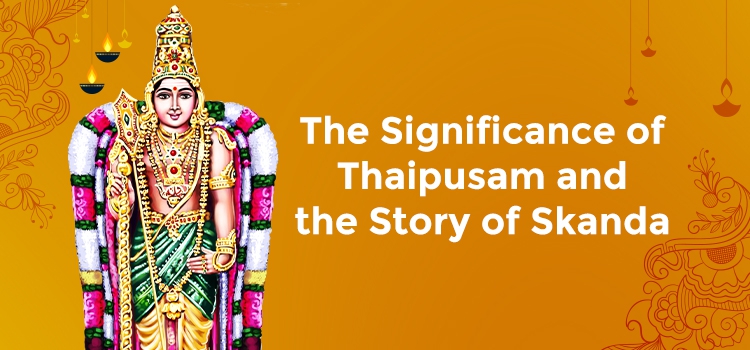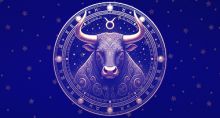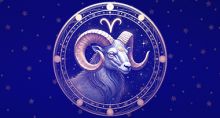The Significance of Thaipusam and the Story of Skanda
Thaipusam festival falls on the first Purnima or full moon day after Makara Sankranthi and the winter solstice. It is a festival that honors Muruga or Skanda, the son of Shiva and Parvati. In south India, it is known as “Dhanya Pournami,” meaning the full moon of fulfillment. On this day, Pushya nakshatra or star prevails in the sky.
It is supposedly the most generous full moon of the year, and this is because of the Earth’s position in relation to the Sun. People who wish to improve their lives can get the maximum results during this time.
Legend says that Parvati gave the Vel or spear to Skanda on this day. He was the commander of the devas, and his birth was for a purpose. He was born to slay the demon, Tarakasura, and his brothers, Soorapadman and Simhamukha, who were harassing the gods. Muruga is the commander of the Devas and also the God of war.

Story of Tarakasura
Tarakasura was the son of Vajranga and Varangi. He wanted to defeat the gods in heaven and decided to amass great power by doing tapas or penance.
So he went to Pariparta hill and began to meditate in a cave there. He survived mostly on water or leaves. He also sliced some flesh from his body daily and offered it to the fire.
Eventually, Brahma appeared before Taraka, pleased by his austerities. The demon wanted the boon of immortality, but Brahma said that it was not possible as all living things had to die one day. So the demon asked that he should be killed only by a 7-year-old child of Shiva. As Shiva had not married after the death of his wife, Sati, Taraka thought he would not have children.
Brahma granted the boon, and after some years, Taraka and his massive army attacked heaven. The gods could not withstand his might, and they approached Brahma for help. Brahma told them that only a child of Shiva could annihilate him. If Shiva married Parvati (who was Sati reborn), the child born of their union would kill Taraka.
How Skanda was Born
The only problem was that Shiva was deep in meditation, and no one had the courage to disturb him. The gods sent Manmadha (the god of love) to disturb his penance and kindle feelings of love in his heart. When Manmadha shot his flower-tipped arrows at Shiva, he opened his 3rd eye and burned Manmadha to ashes. But after Manmadha’s wife pleaded with Shiva, he was restored to life.
Once he emerged from meditation, the gods approached him and told him about Taraka and his boon. So Shiva married Parvati, and Skanda was born. According to legend, 6 sparks of fire emanated from Shiva’s 3rd eye. These were carried to Saravana Poigai by Vayu, where they turned into 6 male babies. The babies were raised by the 6 Krittikai pengal (maidens). When Parvati embraced the infants, they merged to form one baby with 6 heads, or Skanda. He has many names like Shanmugha, Kartikeya, Kumara, etc.
The gods armed him and made him their commander. Goddess Parvati also gave him the divine weapon, Vel (lance). Skanda fought the demons and killed Tarakasura and his brothers, Soorapadman and Simhamukha, with his Vel.
Why is Thaipusam Celebrated?
The Hindu festival of Thaipusam is celebrated mostly by Tamils in the Tamil month of Thai (January-February). It commemorates the day Pavarthi gave Muruga the Vel. It is also celebrated in places like Malaysia, Sri Lanka, South Africa, and Singapore, which have a large Tamil diaspora.
Thaipusam festival celebrates the victory of good over evil. It is also the birthday of Muruga.
How to Celebrate Thaipusam
On the day of Thaipusam, devotees offer Muruga yellow or orange-colored fruits and flowers. These are his favorite colors. They also wear clothes of these colors.
Many carry on their shoulders a semi-circular, wooden canopy-like structure supported by a rod. These contain pooja offerings like milk, fruits, and flowers. The structures are called Kavadis. Kavadi means ‘burden’.The Kavadis are covered with cloth and decorated with flowers and peacock feathers. The peacock is Muruga’s vehicle. Devotees carry the kavadis to Murugan temples on this day. They also perform a ritual dance called Kavadi Attam.
Some pull chariots and heavy objects with hooks that are attached to their bodies. Others pierce their tongue and cheeks with spears. This prevents them from speaking, and they can concentrate on Muruga fully. Many devotees go into a trance when the piercing is done due to the continuous drumming and chanting of "vel vel shakti vel." The piercings and carrying of kavadis are part of the vows that devotees take to have their prayers answered. People also observe a fast and maintain celibacy to make their minds and bodies pure.
Devotees believe that performing such rituals brings Muruga’s blessings to ward off evil and give them the courage to overcome their problems.
Thaipusam 2023 is on February 5, a Sunday.



















